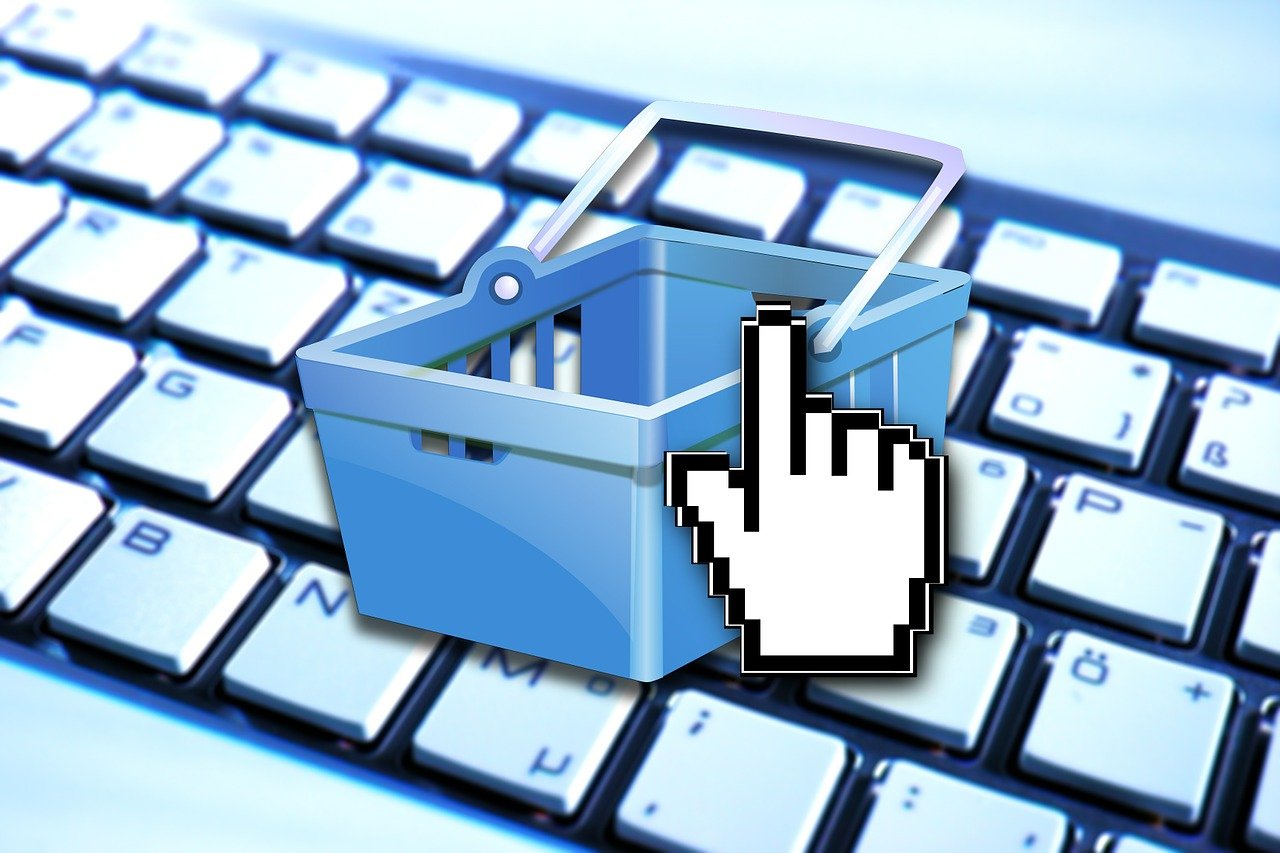So you have some products that you want to sell, and you’ve heard all the buzz about Amazon being the place to do it. But the big question looming over your head is, “How do I sell products on Amazon?” Well, fear not, because in this article, all your doubts and uncertainties will be put to rest. We’ll walk you through the process step by step, break it down into simple and manageable tasks, and by the end of it, you’ll be confidently selling your products on one of the largest online marketplaces in the world. So let’s get started!
Setting up an Amazon seller account
Choosing between an individual and professional seller account
When setting up an Amazon seller account, the first decision you need to make is whether to opt for an individual or professional seller account. An individual seller account is suitable for those who plan to sell only a small number of items. With this type of account, you pay a fee for each item sold, and certain features like bulk uploading are not available. On the other hand, a professional seller account is ideal for those looking to sell larger quantities of products. This type of account requires a monthly subscription fee, but it provides access to advanced selling features and tools.
Creating an Amazon seller account
To create an Amazon seller account, you’ll need to go through a simple registration process. Start by visiting the Amazon Seller Central website and clicking on the “Register now” button. You’ll be prompted to provide some basic information such as your business name, contact details, and bank account information for payment. It’s important to ensure that the information you provide is accurate and up-to-date, as this will be used for account verification and payments.
Completing the registration process
Once you’ve provided the necessary information, you’ll need to complete the registration process. This typically involves verifying your identity, agreeing to Amazon’s terms and conditions, and providing additional information about your business. Amazon may also require you to provide certain documents, such as business licenses or tax identification numbers, depending on your location. Make sure to carefully follow the instructions and provide any requested information promptly to expedite the registration process.
Understanding seller fees and pricing options
As an Amazon seller, it’s important to understand the fees and pricing options associated with selling on the platform. Amazon charges various fees, including referral fees, which are a percentage of the sale price of each item sold, and variable closing fees for specific categories. Additionally, if you opt for a professional seller account, you’ll need to pay a monthly subscription fee. It’s crucial to carefully consider these costs and factor them into your pricing strategy to ensure that you can maintain profitability. Amazon provides detailed information about its fee structure and offers tools to help you estimate fees for different products.
Researching and selecting products
Identifying profitable product categories
When it comes to selling products on Amazon, not all categories are created equal. Some categories are more competitive and have higher demand than others, making them more profitable. It’s important to research and identify product categories that align with your interests, expertise, and target market. Look for categories with a healthy balance of competition and demand, as this will increase your chances of success.
Conducting market research
Market research is a crucial step in the product selection process. It involves gathering data and analyzing market trends, consumer behavior, and competitors’ strategies. This research will help you identify niche opportunities, understand customer preferences, and make informed decisions about which products to sell. Utilize tools like Amazon’s Best Sellers Rank, which provides valuable insights into the popularity of products within specific categories.
Analyzing competitor products and prices
Analyzing your competitors’ products and prices is essential for understanding the market landscape and setting competitive prices for your own products. Take the time to review your competitors’ product listings, paying attention to their features, descriptions, and pricing strategies. This information will give you valuable insights into what customers are looking for and how you can differentiate your products to stand out from the competition.
Validating product demand
Before investing in sourcing or creating products, it’s crucial to validate their demand to ensure you’re investing in profitable opportunities. There are various ways to validate product demand, including conducting keyword research to understand search volume, using tools to analyze sales data on Amazon, and even conducting surveys or focus groups to gather feedback from potential customers. By validating product demand, you can minimize the risk of investing in products that may not generate sufficient sales.

Sourcing or creating products
Finding suppliers and manufacturers
Once you have identified the products you want to sell, the next step is finding reliable suppliers or manufacturers. This can be done through various channels, such as trade shows, online directories, or contacting manufacturers directly. It’s important to thoroughly research and vet potential suppliers to ensure they meet your quality standards, offer competitive pricing, and have a track record of delivering products on time.
Negotiating deals and pricing
Negotiating deals and pricing with suppliers is a critical step in ensuring that you can maintain profitability. Prioritize building strong relationships with your suppliers and aim for mutually beneficial agreements. Negotiate for competitive pricing, favorable payment terms, and consider factors such as minimum order quantities and shipping costs when evaluating potential deals.
Ensuring product quality and reliability
Maintaining high product quality is essential for building a successful business on Amazon. Conduct thorough quality control checks and inspections to ensure that the products you source or create meet the standards expected by customers. It’s also important to establish clear communication channels with suppliers to address any quality issues promptly and effectively.
Private labeling or creating your own brand
Private labeling or creating your own brand is a great way to differentiate your products and establish a unique identity in the marketplace. Private labeling involves sourcing generic products from manufacturers and adding your own branding and packaging. Creating your own brand allows you to develop products that meet specific customer needs and preferences. Consider factors such as target market, brand positioning, and product uniqueness when deciding whether to private label or create your own brand.
Listing and optimizing your products
Creating compelling product listings
When creating product listings on Amazon, it’s important to make them as compelling and informative as possible. Your product listings should effectively communicate the features, benefits, and unique selling points of your products. Consider including high-quality images, detailed product descriptions, and bullet points highlighting key features. The goal is to provide customers with all the information they need to make a purchasing decision.
Crafting effective product titles and descriptions
Product titles and descriptions play a crucial role in attracting potential customers and optimizing your listings for search visibility. Be sure to include relevant keywords in your product titles and descriptions to improve your chances of appearing in search results. However, avoid keyword stuffing and prioritize writing informative and engaging content that appeals to both customers and search engine algorithms.
Adding high-quality product images
High-quality product images are essential for creating a positive shopping experience and inspiring trust in potential customers. Invest in professional product photography or learn how to capture high-quality images yourself. Use multiple angles and highlight key product features to give customers a comprehensive understanding of what they can expect.
Optimizing product keywords for search visibility
Optimizing your product keywords is crucial for enhancing your products’ visibility in Amazon’s search results. Conduct keyword research to identify relevant keywords that customers are likely to use when searching for products like yours. Incorporate these keywords in your product titles, bullet points, and descriptions, but be mindful of maintaining readability and avoiding keyword stuffing. Regularly monitor and adjust your keyword strategy based on performance data and customer search trends.

Setting competitive prices
Researching market prices
Setting competitive prices is vital for attracting customers and remaining profitable. Research market prices within your product category to understand the average selling prices and pricing trends. Take into account factors such as product quality, features, and customer perception when determining whether you can price your products competitively.
Determining the right pricing strategy
Choosing the right pricing strategy involves considering various factors, such as your business goals, target market, competition, and product differentiation. Common pricing strategies include cost-plus pricing, market-based pricing, and value-based pricing. Analyze these strategies and determine which one aligns best with your business objectives.
Using dynamic pricing tools
Dynamic pricing tools can help you automate and optimize your pricing strategy based on real-time market data and competitor analysis. These tools can adjust your prices automatically to stay competitive and maximize your profits. Consider utilizing dynamic pricing tools to take advantage of market fluctuations and improve your chances of winning the Buy Box, a prominent feature on Amazon that increases visibility and sales potential.
Testing and adjusting prices over time
Pricing is not a one-time decision and should be regularly evaluated and adjusted based on market conditions and performance data. Continuously monitor your sales, profits, and customer feedback to gauge the effectiveness of your pricing strategy. Experiment with different price points and closely track the impact on sales to find the optimal price for your products.
Managing inventory and fulfillment
Storing inventory
Deciding where to store your inventory is an important consideration for efficient order fulfillment. You have the option to store your products in Amazon’s fulfillment centers if you choose Fulfillment by Amazon (FBA). This allows Amazon to handle the storage, packaging, and shipping of your products, saving you time and effort. Alternatively, you can opt for self-fulfillment and store your inventory in your own facilities.
Choosing fulfillment options
Choosing between Fulfillment by Amazon (FBA) and self-fulfillment depends on various factors, such as your business size, product type, and logistical capabilities. FBA offers advantages like Amazon Prime eligibility and access to Amazon’s extensive customer base. On the other hand, self-fulfillment provides more control over the fulfillment process and may be cost-effective for smaller businesses. Carefully assess your options and select the fulfillment method that aligns best with your business needs.
Setting up inventory tracking systems
Efficient inventory tracking is crucial for managing stock levels, preventing stockouts, and avoiding overstocking. Implement inventory tracking systems, such as inventory management software, to help you keep a close eye on your inventory levels and sales velocity. This will enable you to make data-driven decisions regarding replenishment and prevent any potential loss of sales due to stockouts.
Utilizing Amazon’s inventory management tools
Amazon provides various inventory management tools to help sellers streamline their operations and improve efficiency. These tools, such as the Amazon Seller App and the Manage Inventory feature in Seller Central, allow you to monitor your inventory levels, track performance, and easily replenish stock. Familiarize yourself with these tools and leverage their functionalities to effectively manage your inventory on the platform.

Promoting and marketing your products
Running Amazon advertising campaigns
Amazon offers various advertising options to help sellers increase visibility and drive sales. Sponsored Products, Sponsored Brands, and Sponsored Display are popular advertising formats that allow you to promote your products to relevant audiences. Create compelling ad campaigns, set specific goals, and regularly monitor performance metrics to optimize your advertising spend and maximize your return on investment.
Utilizing social media marketing
In addition to Amazon advertising, social media platforms can be utilized to promote and market your products. Build a strong social media presence by creating engaging content, leveraging influencers, and interacting with your audience. Social media platforms like Facebook and Instagram can be powerful tools for driving traffic to your Amazon listings and building brand awareness.
Creating product bundles or promotions
Creating product bundles or running promotions can be an effective strategy for increasing sales and attracting customers. Bundling complementary products together can provide added value to customers and boost your average order value. Consider running limited-time promotions, such as discounts or free shipping, to incentivize customers to choose your products over competitors’.
Getting customer reviews and ratings
Positive customer reviews and ratings can greatly influence purchasing decisions on Amazon. Encourage satisfied customers to leave reviews by sending follow-up emails, including inserts in packaging, or offering incentives for leaving feedback. Respond promptly and professionally to any negative reviews or customer inquiries to demonstrate excellent customer service and address any concerns.
Providing excellent customer service
Replying promptly to customer inquiries
Promptly addressing customer inquiries and providing excellent customer service is crucial for building a positive reputation on Amazon. Monitor your messages and notifications regularly and respond to customer inquiries in a timely manner. Aim to provide helpful and informative responses to address customer concerns and ensure a positive buying experience.
Managing returns and refunds
Having a clear and customer-friendly returns and refunds policy is important for building trust with buyers. Amazon has specific guidelines for handling returns and refunds, and it’s essential to adhere to them. Process returns and refunds promptly and with care to maintain customer satisfaction and protect your seller ratings.
Monitoring product feedback and reviews
Regularly monitoring product feedback and reviews allows you to gather valuable insights and address any issues or complaints. Keep track of customer feedback and reviews on your product listings, and take the necessary steps to improve product quality or address customer concerns. Utilize this feedback to continually improve your products and enhance customer satisfaction.
Maintaining high seller ratings
Maintaining high seller ratings is critical for success on Amazon. High ratings signal trustworthiness and reliability to potential customers, increasing the likelihood of sales. Strive for excellent customer service, timely order fulfillment, accurate product descriptions, and prompt issue resolution to maintain and improve your seller ratings.

Expanding sales channels
Selling on international Amazon marketplaces
Expanding to international Amazon marketplaces can open up new opportunities for growth and reach a wider customer base. Research and evaluate the potential of different international marketplaces, taking into account factors such as language barriers, cultural differences, and logistical considerations. Consider using Amazon’s Global Selling program to simplify the process of selling internationally.
Exploring other e-commerce platforms
While Amazon is a popular choice for selling products online, there are other e-commerce platforms worth considering. Platforms like eBay, Shopify, and Walmart Marketplace offer their own unique benefits and can help you reach different customer segments. Explore these platforms and determine if they align with your business goals and target market.
Establishing partnerships with retailers
Collaborating with retailers can help you expand your sales channels and reach customers in brick-and-mortar stores. Consider partnering with retailers who align with your brand and target market. Establishing wholesale or distribution partnerships can allow you to tap into existing distribution networks and leverage their marketing efforts to promote your products.
Building your own website or online store
Building your own website or online store provides you with greater control over your brand and customer experience. It allows you to showcase your products in a unique way and establish a direct relationship with your customers. Consider investing in a user-friendly e-commerce platform and implementing effective marketing strategies to drive traffic to your website.
Analyzing data and optimizing performance
Monitoring sales metrics and performance indicators
Analyzing sales metrics and performance indicators is essential for understanding the effectiveness of your strategies and identifying areas for improvement. Track key metrics such as conversion rates, customer acquisition costs, and return on investment. Use these insights to make data-driven decisions and optimize your business operations.
Tracking advertising and marketing effectiveness
To assess the effectiveness of your advertising and marketing efforts, track key performance metrics such as click-through rates, conversion rates, and return on ad spend. This data will help you evaluate the success of your campaigns and identify areas where adjustments or optimization are needed.
Using Amazon’s seller analytics tools
Amazon provides a range of seller analytics tools to help you track and analyze your performance on the platform. Tools like Amazon’s Business Reports and the Advertising Console provide valuable insights into your sales, advertising performance, and customer behavior. Utilize these tools to gain a deeper understanding of your business performance and identify opportunities for growth.
Implementing continuous improvement strategies
To stay competitive and grow your business on Amazon, it’s crucial to continuously analyze and improve your strategies. Regularly review your processes, customer feedback, and performance metrics to identify areas where you can make adjustments or optimizations. Implement continuous improvement strategies to adapt to market changes, enhance customer satisfaction, and drive long-term success.
In conclusion, selling products on Amazon requires careful planning and execution. From setting up your seller account to effectively marketing your products and optimizing your performance, every step is crucial for success. By following the outlined steps and continually refining your strategies, you can establish a profitable presence on Amazon and achieve your business goals.




